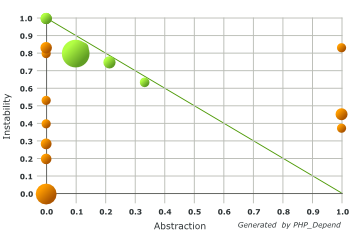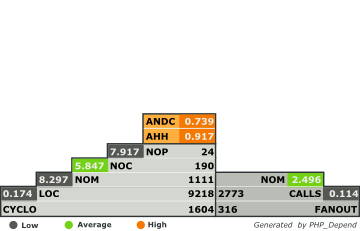Flux uses Fluid ViewHelpers to define a form structure which can be rendered in the TYPO3 backend when editing special types of records - used for example by the Fluid Content extension to enable dynamic content elements based on Fluid templates. Can be used in your own plugins to enable dynamic forms and a few extra features such as adding nested content elements to your plugin or performing special actions whenever a record from your extension is saved, moved, deleted and so on.
Understanding the Abstraction Instability Chart and Pyramid Chart.
Flux uses a range of ViewHelpers to define a set of configuration (fields, their layout, how to process them etc) inside a Fluid template (which can also be rendered just like any normal Fluid template). By reading this stored configuration Flux provides a universal way to read a standard type of configuration which applies to records (pages, content, domain logic records).
Flux is a much, much faster way to create FlexForm-style configuration fields in any record type. In addition to this, Flux also provides an extensible way to interact with records of any type when they are saved, deleted, moved etc. in the TYPO3 backend. All in all it allows you to create very flexible processing logic which can also be called upon when you render templates from your extension. This has many uses:
- EXT:fluidcontent uses this to provide a way to use one special type of content element to render a multitude of highly
flexible content elements which can, just as an example, function as container elements for other content elements. By attaching
itself to records from the
tt_contenttable it is able to manipulate the backend use and frontend rendering of content records. - EXT:fluidpages uses this to provide a similar integration as EXT:fluidcontent but with the
pagestable, which means that instead of attaching itself to the content use and rendering, it attaches itself to the page manipulation in backend and rendering of pages in the frontend. - EXT:fluidbackend uses this to interact with a special type of configuration storage record and present the form fields configured in Fluid template files as (the core interface of) custom TYPO3 backend modules which can also render any content normally usable in Fluid templates.
- EXT:tweetnews uses this to hook into record saving and manipulation of the "News" record from EXT:news in order to query the Twitter API and analyse a few preset rules to determine if the news item has already been tweeted, as well as present a bit of status reporting from the Twitter API interaction.
These are just examples which each use a different TYPO3 database record type to perform advanced operations associated with that particular record type.
The logic of Flux is, since it is ViewHelper based, a simple question of learning a basic approach regarding template structure. And since Flux is always used in the same manner regardless of the associated record type, it becomes much easier to demonstrate and illustrate (not to speak of explaining in a non-abstract way) how Flux does what Flux does - if seen in the context of a specific implementation such as, but not limited to, EXT:fluidcontent.
Therefore the best advise is this:
- Study the guides for creating Flux configurations in the context where you consider using it. This gives you a good frame of reference and a clear goal as use case. For example: studying a page templating guide for EXT:fluidpages naturally show you how fields are used (as will any Flux-related guide) but more importantly, it also demonstrates how to access the fields when rendering takes place.
- Always keep the ViewHelper Reference for Flux handy; it clearly specifies every option you have when it comes to building the configuration.
- Remember that Flux fields and the concept around building a form out of those fields, is exactly the same concept as the well- known TCEforms, which you have come across in many other aspects: it all uses the same way of thinking as when you define TCA for your records or when you create - well, used to create, anyway ;) - XML based FlexForms. Many names are the same and the attributes are available are (as far as possible) replicated in Flux field ViewHelpers.
- Keep In mind to have you PHP configured correctly to accept a fairly large number of input fields. When nesting
sections / objects the number of fields submitted, rises drastically. The php.ini configuration setting to think about, is
max_input_vars. If this number is too small, the TYPO3 Backend (effectively PHP) will decline the submission of the Backend Form and will die with an "Invalid CSRF Token" message.
Other extensions which are closely related to this extension:
- https://github.com/FluidTYPO3/vhs is a highly suggested companion for any type of Fluid templates, providing useful ViewHelpers.


